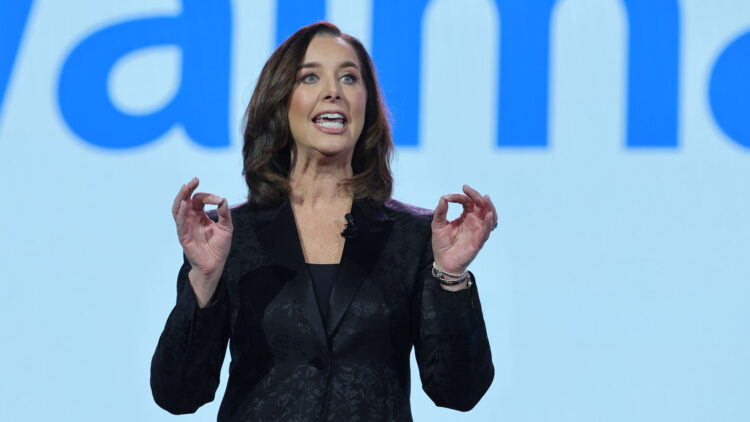Have you ever thought about what the biggest red flag at work is? It’s wild how often we think the reason we’re stuck at work is because we’re missing some skill, some certification, some shiny new bullet point on our résumé.
But more often than not? It’s not about what’s on paper. It’s about how you show up.
Walmart’s Chief People Officer, Donna Morris, put it simply. It’s not the underperformers that worry her most, it’s the ones who show up with a cloud over their heads, day in and day out.
“Nobody wants a Debbie Downer,” she said to CNBC. Not because they’re having a bad day (we all do), but because they’ve become the person who always finds the downside. “constantly negative. You know they’re going to show up, they’re going to bring the problem, never the solution. I like people who bring the problem and a suggestion for how they might resolve it”
You know the type. The one who rolls their eyes during team meetings. Who always sees what could go wrong but never offers what might work? Who’s constantly “realistic,” but never hopeful.
That person might be technically solid, but in the eyes of human resources, business executives, and the team around them, they become a walking red flag. Not because they’re not skilled, but because they’re hard to work with.
You don’t need to be the loudest nor the heaviest
Nobody’s expecting you to be happy and cheerful all the time. Being honest about hard situations is part of being human. But there’s a big difference between being real and being negative.
The “Debbie Downer’s” kind of coworkers “only going to support you to a restricted limit,” Juliette Han, a Harvard-trained neuroscientist, told CNBC Make It “They need you to stay within a short leash, and might discourage you from meeting new people in the company or going after new projects if it doesn’t benefit them directly.”
That behavior adds up. It shapes the reputation. It shows up in small ways, like in how often they can be invited into new projects, in who gets chosen to lead something new, and in the kinds of chances that land on your desk. Managers and bosses might find it more difficult to trust them with a task.
The people who grow go this differently
For Donna, a green flag worker “delivers what you are expecting at the time that you’re expecting,” she says. “You’re better to deliver early than to deliver late, and you’re better to deliver more than less.”
“Another green flag is they’re open to opportunities, and they put their hand up to take on more,” she adds. “Or they bring a problem with the remedy or request help in a timely manner, as opposed to the house is on fire.”
They ask questions. Offer ideas. Help without waiting to be asked. They mentor new people. They’re always in the loop of what’s happening around them: a new trend in their field, a problem to be solved, or a teammate who’s clearly overwhelmed and might need some help.
That’s what real leadership looks like. It’s how you treat people when no one’s watching you.
A red flag now can be a green flag later
You can have all the right experience. You can ace your job interviews. You can do solid work every day. But if being around you feels heavy, people notice.
And if being around you feels helpful, steady, and supportive? People remember that too. They bring you into the room. They invite you to the table.
So if things feel stuck right now, maybe it’s time to check how you’re showing up.

